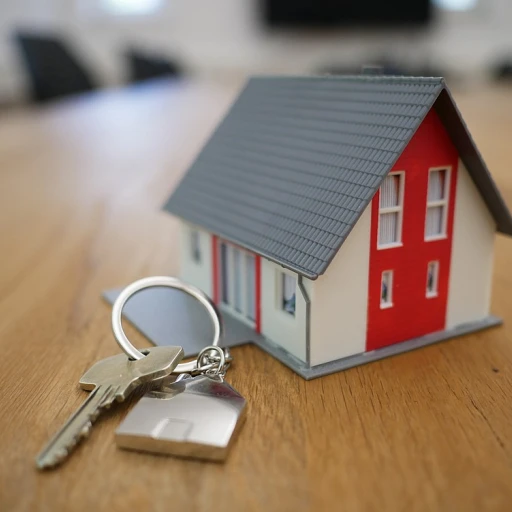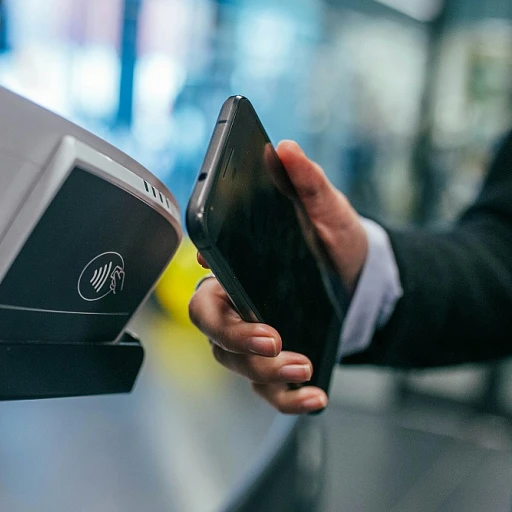
Understanding the Cleanroom Services Landscape
Navigating the Complex Terrain of Cleanroom Services
In the world of specialized services, cleanroom services play a pivotal role across multiple industries such as pharmaceuticals, semiconductor manufacturing, and medical devices. These controlled environments are essential for ensuring that the strictest of standards are met, particularly regarding contamination control and regulatory compliance. As companies continue to push the boundaries of innovation and operational efficiency, understanding the landscape of cleanroom services becomes increasingly vital.
A cleanroom is more than just a sterile space; it is a meticulously designed and maintained environment where airborne particles, temperature, and humidity are regulated to meet ISO class standards. These environments require specialized cleanroom cleaning services to maintain compliance with industry standards and iso regulations. Every aspect, from facility design to environmental monitoring, must be orchestrated with precision to mitigate contamination risks and ensure the highest quality outcomes.
The complexities of cleanroom services extend to regulatory standards and industry requirements where certification is critical. For organizations striving for excellence in cleanroom certification, implementing thorough cleaning protocols and maintaining stringent compliance are non-negotiables. This landscape is a testament to the ongoing evolution of cleanroom services, which demand both expert knowledge and years of experience to manage effectively.
In recent years, the industry has seen a surge in the need for professional cleanroom services, driven by the rapid advancements in technology and the growing demand for high-quality manufacturing practices. Cleanroom services are not merely about maintaining cleanliness; they encompass a comprehensive approach involving design, monitoring, and continuous improvement to meet the ever-evolving environmental requirements.
For those seeking strategic growth within the cleanroom sector, a thorough understanding of these controlled environments and their associated services is essential. As the industry progresses, so too must our strategies for addressing operational efficiency and market expansion, elements that are as integral to success as contamination control. To delve further into the expansive realm of strategic planning and leveraging innovative solutions, explore the unveil the potential of innovative strategic planning initiatives.
Strategic Innovation in Cleanroom Services
Embracing Technological Advancements for Enhanced Offerings
The realm of cleanroom services demands a robust approach to innovation, aiming to bolster service delivery in controlled environments. To thrive, companies must integrate cutting-edge technologies, such as IoT and automation, which streamline contamination control and environmental monitoring processes. This integration ensures industries maintain compliance while optimizing cleanroom performance.
Strategic Partnership and Collaboration
Forging partnerships with technology experts can propel the design and construction of high-quality cleanrooms. This collaboration paves the way for advancements that align with industry standards and iso class certifications. By working with specialists who have years of experience in cleanroom cleaning and certification, companies can enhance their offerings, ensuring reliable environmental compliance.
Innovative Cleanroom Design and Construction
To cater to diverse industries such as medical devices and manufacturing, cleanroom services must evolve in their design. Using innovative materials and construction techniques will enhance cleanrooms, ensuring they effectively control airborne particles and other contaminants. Building cleanrooms that adapt to varying industry-specific demands will solidify a company’s position as a leader in the field.
Enhancing Competitive Edge through Customization
Customization is a cornerstone of strategic innovation in cleanroom services. Tailoring solutions to client-specific needs not only assures adherence to regulatory standards but also fosters lasting relationships. This personalized approach to contamination control and cleanroom cleaning protocols can set a standard for excellence.
Incorporating strategic approaches in service delivery will unlock new avenues for growth and align with environmental and certification goals, paving the way for sustained industry leadership.
Operational Efficiency and Cost Management
Enhancing Operational Success with Streamlined Processes
Ensuring operational efficiency in cleanroom services requires a combination of cutting-edge technology and well-designed processes. One critical aspect is optimizing these services to meet the strict standards and certifications demanded by industry regulations. Cleanrooms must adhere to rigorous regulatory standards to minimize contamination risks.- Process Automation: Implementing advanced cleaning protocols and automation tools can significantly reduce human error and improve compliance. ISO standards, which specify the classification of airborne particles, play a vital role in managing controlled environments. Ensuring solutions align with these criteria can enhance efficiency.
- Environmental Monitoring: A robust environmental monitoring system is essential. It helps in tracking contamination levels, allowing for timely interventions. This not only maintains cleanliness but also aids in retaining cleanroom certification by meeting industry standards consistently.
- Cost Management: Balancing operational costs while maintaining high service quality is key. By identifying areas of resource optimization, such as energy usage and labor allocations, companies can engineer cost savings without compromising on cleanliness or safety.
Market Expansion and Customer Acquisition
Expanding Reach through Strategic Initiatives
The cleanroom services industry offers immense potential for growth, especially when targeting new markets and enhancing customer acquisition strategies. Leveraging deep industry insights, successful expansion demands a comprehensive understanding of the current market dynamics, including the variances in regional demand for cleanroom services. Cleanrooms are essential across numerous industries, from medical devices to high-tech manufacturing, each with unique needs and compliance standards.Building a Strong Market Presence
To effectively penetrate new markets, cleanroom service providers must first refine their value propositions to resonate with distinct industry requirements. This involves offering tailored solutions that align with regional regulatory standards and customer expectations. Moreover, companies should focus on:- Crafting Industry-Specific Solutions: Develop cleaning protocols and contamination control measures that cater to specific industries, ensuring adherence to ISO class and other certification requirements.
- Partnerships and Alliances: Establishing strategic partnerships with local industries can facilitate smoother market entry and strengthen the brand's presence as a trusted provider.
- Enhanced Customer Engagement: Utilize advanced marketing techniques to communicate key differentiators, such as years of experience and superior testing standards, to potential clients.
Adopting Innovative Customer Acquisition Techniques
Innovation in customer acquisition can significantly boost a company’s market footprint. Introducing cutting-edge service delivery methods, such as automated environmental monitoring and real-time compliance tracking, can set a cleanroom service provider apart from competitors. Companies should also:- Embrace Digital Transformation: Leveraging digital platforms to reach new audiences and streamline service operations can enhance customer satisfaction and retention.
- Focus on Sustainability Initiatives: As environmental responsibility becomes a priority across industries, cleanroom services that prioritize environmentally friendly cleaning protocols are increasingly attractive.
- Invest in Training and Development: A skilled workforce adept with the latest contamination control methods ensures the delivery of professional cleanroom services that reflect industry standards.
Risk Management and Compliance
Ensuring Adherence to Regulatory Standards
In the realm of cleanroom services, maintaining compliance with stringent regulatory standards is crucial. This involves adhering to established industry protocols for contamination control and environmental monitoring. Regulatory compliance not only safeguards the operational integrity of your cleanroom facilities but also enhances trust and credibility with clients across various industries, such as medical devices and pharmaceuticals.
The importance of maintaining stringent contamination control measures cannot be overstated. Adhering to ISO standards and utilizing professional cleanroom cleaning services helps to prevent contamination by airborne particles, ensuring clean environments meet rigorous certification requirements. Integrating robust testing and monitoring protocols further solidifies this level of compliance.
Robust Design and Build Strategies
Designing and maintaining clean rooms that align with industry standards demand a keen understanding of controlled environments. Organizations must implement strategic approaches in the design and construction phases to ensure long-term compliance with environmental regulations.
Moreover, environmental responsibility comes hand-in-hand with strategic growth in the cleanroom industry. By prioritizing sustainable practices and investing in innovative design, companies can not only achieve regulatory compliance but also position themselves as leaders in sustainability within the cleanroom sector.
Long-term Accountability and Monitoring
For effective risk management, companies must establish rigorous cleaning protocols and environmental monitoring systems. Regular audits and inspections play a vital role in ensuring cleanroom environments consistently operate within regulatory frameworks.
Adopting a proactive stance on compliance risk management facilitates swift responsiveness to any potential non-compliance issues, thus protecting the reputation and operational continuity of your business.
Sustainability and Environmental Responsibility
Prioritizing Eco-friendly Practices in Cleanroom Operations
In the pursuit of strategic growth, integrating sustainability and environmental responsibility into cleanroom services is no longer optional; it's essential. As industries increasingly focus on environmental sustainability, cleanroom facilities must adapt by implementing eco-friendly practices that not only comply with regulatory standards but also align with industry expectations.- Environmental Monitoring and Compliance: It is crucial to ensure that cleanroom environments adhere to the highest industry standards, including ISO class specifications. This involves regular environmental monitoring to control contamination, airborne particles, and other pollutants while maintaining compliance with established regulatory standards.
- Resource-efficient Cleanroom Design: Companies should prioritize designing and building cleanrooms that are energy-efficient and minimize waste. By doing so, they enhance operational efficiency and align with sustainable practices. This includes optimizing controlled environments to reduce energy consumption and implementing eco-friendly materials in cleanroom design.
- Green Cleaning Protocols: Transitioning to eco-friendly cleaning services and products ensures thorough contamination control while minimizing environmental impact. Adopting sustainable cleaning protocols not only contributes to cleaner environments but also improves the organization’s environmental footprint.
- Certification and Accountability: Achieving cleanroom certification focused on sustainability showcases a company's commitment to environmental responsibility. It strengthens trust with clients and stakeholders who place high value on sustainable practices in medical device manufacturing and other critical industries.













